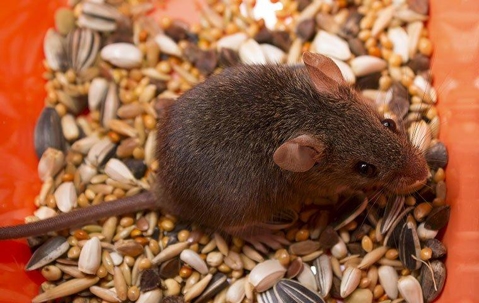The title of “pest” is very fitting for the insects and creatures of the earth. Most are extremely irritating and cause distress. They’re nasty looking and many can harm you in some fashion. Some species can scratch, sting, bite, or infuse venom into your bloodstream. Several can spread diseases. A great number can wreck property besides. These concerns are heightened with critters that procreate quickly or are tough to eliminate. Mice match this description in its entirety.
One of the challenging aspects of deterring mice is figuring out how they get in, and the best way to stop them. By doing a little research and reading now, you can find the answers regarding these dangerous critters. Further, you’ll learn how our pest control services in Chesapeake can be of service.
How Do Mice Look & Behave? What Are The Risks?
House mice get their name because they tend to invade homes, seeking food and shelter. They are of a decent size, being about 7 inches long if you include their tails. Their bodies are covered with short brown, black, or gray fur. One noticeable feature they have is a lighter stomach. Mice are so flexible, they’re able to get through holes as small as ½ of an inch in diameter. Foundation voids, cabinets, basements, and the like are ideal settling spaces for them because of the conditions. They prefer rooms that are dark, damp, warm, and quiet. Homes that are close to fields, the woods, and other grassy areas are at increased risk of mouse infestations.
Mice have teeth that are constantly growing. To prevent overgrowth, they’ll chew on walls, structural timbers, and electrical cords. With the latter, there is the potential for an electrical outage or fire. These creatures also carry bacteria and parasites. It’s in their fur, saliva, urine, and feces. As they pillage through food and roam surfaces, they contaminate everything they touch. It doesn’t help that they are frequently in filthy settings, such as in trash and sewers. Subsequently, humans living in close proximity to mice are at risk of developing lymphocytic choriomeningitis, hantavirus, salmonella, and other illnesses.
Major signs a mouse of infestation include:
- Spotting rod-shaped droppings with rounded ends
- Seeing footprints with four front toes and five back toes
- Hearing scratching and squeaking around walls
- Noticing teeth and bite indentions on walls and wires
- Smelling foul odors
How Can You Prevent Mice?
To reduce the chances of an encounter with mice, you’ll have to monitor the structural quality of your home. Also, you’ll need to make sure you aren’t inadvertently providing food and water for these critters. Prevention tips include:
- Reduce clutter.
- Vacuum and clean your kitchen regularly.
- Use containers with tight lids to store food and garbage. This goes for pet meals and birdseed too.
- Don’t let leaks and moisture issues go without repairs.
- Seal up cracks and crevices near windows, doors, and foundations.
- Clean gutters on a routine basis.
- Keep flowers, plants, and other greenery distanced from exterior doors.
What Can Albemarle Termite & Pest Control Do About Mice?
Many residents opt to use traps when they have issues with mice. The problem is this is only a temporary fix. Traps might catch individual rodents, but they won’t remedy an infestation or an entry point. Plus, handling these vermin or their waste can be hazardous. If you want efficiency and effectiveness, contact us at Albemarle Termite & Pest Control.
Our Service Professionals are specially trained to face mice. They’ll be able to locate and address nests, using our advanced equipment. Industrial-grade home pest control treatments will be applied for fast results. Don’t worry, all of our products are safe for domestic animals and humans. Call us today and start with a no-obligation inspection!

